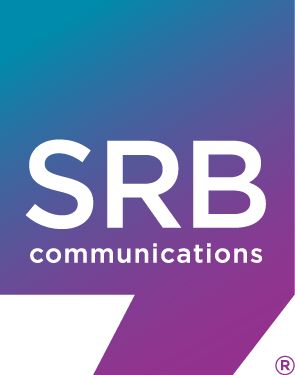News & Insights
Multicultural Marketing Speaks to Everyone
Advertising’s “mainstream market,” the wealthy white America engine that has driven this industry for decades, is getting run over by multicultural Americans’ swelling numbers and spending power.
Their interests and aspirations will power marketing in the decades to come as shifting demographics push the nation’s white population below 50% for the first time as soon as 2045, according to the Census Bureau. Many advertising agencies aren’t ready, unlike
SRB Communications.
Multicultural marketing is SRB’s specialty. We’ve helped utility companies, public health agencies; corporate, government and large nonprofit clients do it since we opened for business 33 years ago this month. Our founder, president and CEO, Dr. Sheila Brooks, has even taught college courses on the subject. “Leaders must be more intentional to reflect diversity in the creative and content for the brands they’re working with. It’s important to embrace culturally specific messaging campaigns,” Brooks says.
Businesses that are good at this understand that diversity, equity and inclusion (DEI) must be baked into everything they do. Why aren’t the big agencies doing more? An important reason may be that they lack action plans to match their stated good intentions to promote diversity among staff, middle and upper management, and in their hiring and promotion practices.
Diverse teams are essential, especially diversity among decision-makers, Brooks says. Research clearly demonstrates that diversity drives innovation, improves organizational performance and advances business growth.
Many big agencies talk a good game. They just haven’t played one. In 2020, in the wake of the separate police killings of George Floyd and Breonna Taylor, numerous large advertising agencies touted their plans to hire and promote more minorities and publicize progress reports. That year, a Black advocacy group called Three’s a Crowd created an “In for 13” initiative that sought to sign agencies to a three-year pledge to increase Black hiring to reach 13% of the industry, a goal in line with the overall population. A year later, AdWeek reported in 2021, the number of agencies committed to the pledge had dropped by nearly 70%. The group has not yet reported last year’s results.
The Importance of Research in Marketing
Two SRB practices can help an agency approach multicultural marketing effectively. One is to create a diverse hiring policy, especially for key agency positions with power to shape or make decisions. Another is to deeply research multicultural target audiences through interviews, surveys or other methods before creating any marketing messaging and materials. Research yields insights that help to understand the audience, communicate with them and, just as importantly, avoid language or images that might be offensive, Brooks believes.
Why Multicultural Marketing Matters
People respond to advertising that showcases people that look like them in activities or situations they experience. According to the marketing agency Marketsmith, consumers are five times more likely to want to learn about a brand featuring people they can relate to. They are also three times more likely to buy from such a brand for the first time and 50% are more likely to repurchase.
Authenticity is important too. Advertising must mirror its intended audience and culture positively and accurately. A study by Google found 69% of Black consumers said they were more likely to purchase from a brand whose advertising positively reflects their race or ethnicity. The same study also revealed that 71% of LGBTQ+ consumers said they were more likely to interact with an online ad that authentically represents them.
New Awards Spotlight Creative Successes
Advertisers may be taking note. This year for the first time, the advertising industry handed out awards to the brands judged to have the most culturally inclusive marketing in the prior year. Among the winners were Gatorade, Lysol, McDonald’s, Walmart and Disney.
The awards were sponsored by the Alliance for Inclusive and Multicultural Marketing (AIMM) and the Cultural Inclusion Accelerator (CIMM). AIMM is part of the Association of National Advertisers.
Replaying some winners’ spots reveals what successful approaches to multicultural audiences look like. In one commercial for Lysol Laundry Sanitizer, a dad drops his smelly athletic socks into a washing machine with the Lysol product after his young daughter chides him about his socks’ bad odor. The dad and daughter are Black. The commercial subtly punctures a familiar stereotype: the myth of Black dads’ absence in their families. It’s a brilliant example of the sensitivity and creativity that marketers need to compete for customers who value brands that infuse marketing with diversity.
According to the co-sponsors, the winners’ spots boasted some common elements: universally appealing familial dynamics and a unique approach to family in their storylines. Simply put, they were relatable for all kinds of viewers regardless of how they identified.
Resources for culturally sensitive marketing:
Amazon Ads: The Importance of Diversity and Inclusion in Marketing and Advertising
American Psychological Association Guide to Bias-Free Language
APA's Inclusive Language Guidelines
Google: Authentically Reflecting Black People
Diversity Style Guide
Words Matter: Suicide and Mental Health



